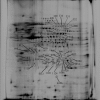Identification of differentially expressed proteins in porcine alveolar macrophages infected with virulent/attenuated strains of porcine reproductive and respiratory syndrome virus
- PMID: 24465692
- PMCID: PMC3897507
- DOI: 10.1371/journal.pone.0085767
Identification of differentially expressed proteins in porcine alveolar macrophages infected with virulent/attenuated strains of porcine reproductive and respiratory syndrome virus
Abstract
The highly pathogenic porcine reproductive and respiratory syndrome virus (HP-PRRSV) is still a serious threat to the swine industry. However, the pathogenic mechanism of HP-PRRSV remains unclear. We infected host porcine alveolar macrophages (PAMs) with the virulent HuN4 strain and the attenuated HuN4-F112 strain and then utilized fluorescent two-dimensional difference gel electrophoresis (2D-DIGE) to screen for intracellular proteins that were differentially expressed in host cells infected with the two strains. There were 153 proteins with significant different expression (P<0.01) observed, 42 of which were subjected to mass spectrometry, and 24 proteins were identified. PAM cells infected with the virulent strain showed upregulated expression of pyruvate kinase M2 (PKM2), heat shock protein beta-1 (HSPB1), and proteasome subunit alpha type 6 (PSMA6), which were downregulated in cells infected with the attenuated strain. The upregulation of PKM2 provides sufficient energy for viral replication, and the upregulation of HSPB1 inhibits host cell apoptosis and therefore facilitates mass replication of the virulent strain, while the upregulation of PSMA6 facilitates the evasion of immune surveillance by the virus. Studying on those molecules mentioned above may be able to help us to understand some unrevealed details of HP-PRRSV infection, and then help us to decrease its threat to the swine industry in the future.
Conflict of interest statement
Figures




Similar articles
-
Label-Free Quantitative Proteomic Analysis of Differentially Expressed Membrane Proteins of Pulmonary Alveolar Macrophages Infected with Highly Pathogenic Porcine Reproductive and Respiratory Syndrome Virus and Its Attenuated Strain.Proteomics. 2017 Dec;17(23-24):1700101. doi: 10.1002/pmic.201700101. Epub 2017 Nov 24. Proteomics. 2017. PMID: 29052333 Free PMC article.
-
Two-dimensional liquid chromatography-tandem mass spectrometry coupled with isobaric tags for relative and absolute quantification (iTRAQ) labeling approach revealed first proteome profiles of pulmonary alveolar macrophages infected with porcine reproductive and respiratory syndrome virus.J Proteome Res. 2012 May 4;11(5):2890-903. doi: 10.1021/pr201266z. Epub 2012 Apr 17. J Proteome Res. 2012. PMID: 22486680
-
Proteome changes of lungs artificially infected with H-PRRSV and N-PRRSV by two-dimensional fluorescence difference gel electrophoresis.Virol J. 2010 May 26;7:107. doi: 10.1186/1743-422X-7-107. Virol J. 2010. PMID: 20504321 Free PMC article.
-
Transcriptome Analysis Reveals Dynamic Gene Expression Profiles in Porcine Alveolar Macrophages in Response to the Chinese Highly Pathogenic Porcine Reproductive and Respiratory Syndrome Virus.Biomed Res Int. 2018 Apr 29;2018:1538127. doi: 10.1155/2018/1538127. eCollection 2018. Biomed Res Int. 2018. PMID: 29854728 Free PMC article.
-
The gene expression profile of porcine alveolar macrophages infected with a highly pathogenic porcine reproductive and respiratory syndrome virus indicates overstimulation of the innate immune system by the virus.Arch Virol. 2015 Mar;160(3):649-62. doi: 10.1007/s00705-014-2309-7. Epub 2014 Dec 12. Arch Virol. 2015. PMID: 25504361
Cited by
-
Proteomic analysis of sheep primary testicular cells infected with bluetongue virus.Proteomics. 2016 May;16(10):1499-514. doi: 10.1002/pmic.201500275. Epub 2016 Apr 13. Proteomics. 2016. PMID: 26989863 Free PMC article.
-
Quantitative Analysis of Cellular Proteome Alterations in CDV-Infected Mink Lung Epithelial Cells.Front Microbiol. 2017 Dec 22;8:2564. doi: 10.3389/fmicb.2017.02564. eCollection 2017. Front Microbiol. 2017. PMID: 29312244 Free PMC article.
-
Label-Free Quantitative Proteomic Analysis of Differentially Expressed Membrane Proteins of Pulmonary Alveolar Macrophages Infected with Highly Pathogenic Porcine Reproductive and Respiratory Syndrome Virus and Its Attenuated Strain.Proteomics. 2017 Dec;17(23-24):1700101. doi: 10.1002/pmic.201700101. Epub 2017 Nov 24. Proteomics. 2017. PMID: 29052333 Free PMC article.
-
Monoclonal Antibodies Targeting Porcine Macrophages Are Able to Inhibit the Cell Entry of Macrophage-Tropic Viruses (PRRSV and ASFV).Viruses. 2025 Jan 24;17(2):167. doi: 10.3390/v17020167. Viruses. 2025. PMID: 40006922 Free PMC article.
-
Porcine Epidemic Diarrhea Virus and the Host Innate Immune Response.Pathogens. 2020 May 11;9(5):367. doi: 10.3390/pathogens9050367. Pathogens. 2020. PMID: 32403318 Free PMC article. Review.
References
-
- Neumann EJ, Kliebenstein JB, Johnson CD, Mabry JW, Bush EJ, et al. (2005) Assessment of the economic impact of porcine reproductive and respiratory syndrome on swine production in the United States. J Am Vet Med Assoc 227: 385–392. - PubMed
-
- Pejsak Z, Stadejek T, Markowska-Daniel I (1997) Clinical signs and economic losses caused by porcine reproductive and respiratory syndrome virus in a large breeding farm. Vet Microbiol 55: 317–322. - PubMed
-
- Zhou YJ, Hao XF, Tian ZJ, Tong GZ, Yoo D, et al. (2008) Highly virulent porcine reproductive and respiratory syndrome virus emerged in China. Transbound Emerg Dis 55: 152–164. - PubMed
Publication types
MeSH terms
Substances
LinkOut - more resources
Full Text Sources
Other Literature Sources
Research Materials
Miscellaneous

